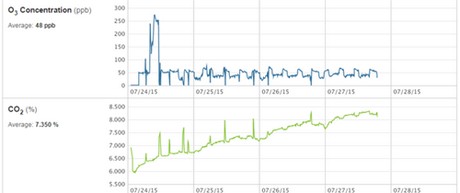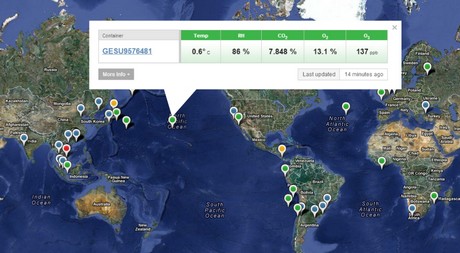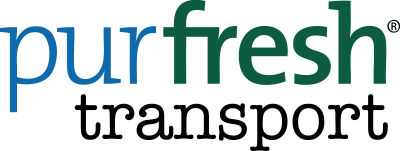Adjustable Temperature, CO2, and O2 Levels At Sea - featured at FreshPlaza
“To achieve this, it is key to keep the cold chain and atmospheric parameters intact, and closely monitor produce during the entire transportation process,” says Christian DeBlasio with Purfresh. “When monitoring dry products, the customer mainly wants to know where the product is. However, with refrigerated shipments that require temperature control and more, cargo location monitoring alone is not enough.” Common cargo tracking and monitoring offers post-trip analysis, but by the time the vessel arrives at its destination, quality of the product may have been compromised at some time prior in the voyage.
 Cloud-based system
Cloud-based system
“Our cloud-based enterprise system allows customers to monitor their produce 24/7. In fact, it’s much more than monitoring as the system also allows for corrective actions to be made,” DeBlasio mentioned. Purfresh offers in-transit monitoring for climacteric fruits such as avocados and blueberries as well as non-climacteric fruits like pineapples and grapes. Avocados need to be shipped in a controlled atmosphere environment to delay the ripening process during shipment. In addition to the ability to change the temperature, the category of climacteric fruits may also need corrections of CO2 and O2 levels during shipment.
Real-time monitoring
“Temperature, fresh air ventilation, CO2 as well as O2 levels can be viewed and adjusted while the produce is at sea,” said DeBlasio. Purfresh’ customers receive login credentials for the company’s cloud-based system, called Intellipur. It is a role-based secure login system that allows customers to see where their containers are at sea, what the travel path of the vessel is, but also what the temperature, CO2 levels as well as O2 levels inside the containers are. This is real-time monitoring and if needed, in-transit corrective actions can be taken. Shippers can even print a PDF report from the shipment to show to their cargo buyers, even before the container is unstuffed.
When Purfresh or the customer notices levels are moving out of range, there are two ways to take a corrective action. The first one is the manual fix in which case Purfresh would send a message to the ocean carrier with the request to get the level adjusted. The ocean carrier sends the message to the ship and it takes about five to eight hours to correct the issue.
Remote correction
Purfresh also offers the opportunity to resolve some issues remotely. “If we have permission from the client and shipping line, we can change the set point for temperature for instance via Intellipur login and adjusting it. Our message goes from Intellipur to the satellite and from the satellite to the Purfresh device which is integrated with the ocean container,” said DeBlasio. It takes about two hours for the message to get to the ship and two hours to send back the correction confirmation, saving valuable time.
A unique training program teaches Purfresh customers how to work with the system. “We educate cargo owners and explain what the different warnings and alarms mean and when they need to take action.” A power off event for instance is expected when produce is moving between land and sea and loaded onto vessels. However, if the power off event takes too long, an alarm will go off and customers know they need to follow up. Purfresh has its own in-house team managing these alarms.
“Our pro-active approach and the ability to take in-trip corrective action avoids the loss of cargo value at destination. This is what we do best,” finished DeBlasio.
For more information:
Christian DeBlasio
Purfresh
Tel: (+1) 813-546-0274
Publication date: 4/24/2018
Author: Marieke Hemmes
Copyright: www.freshplaza.com

